Making Friends With A Permalloy Stranger
Review by Noam Bronstein
I love that moment of anticipation I feel, the first time I lower the stylus of a new phono cartridge into a familiar record groove. Like speakers, these transducers we call cartridges tend to have a marked influence on the sonics of our systems. Sometimes you smile as you hear the first few notes; sometimes you grin from ear to ear.
And, as with the process of befriending a stranger, some review experiences are a lesson in patience. When I first set up Nagaoka’s top-of-the-line MP-500 in my system, my thoughts were along the lines of, “This is….nice. A bit soft for my taste, but good.” It didn’t exactly sound veiled, or imprecise. I just didn’t hear much in terms of bite, or dynamics. Not a whole lot of excitement. Now, I’d like to think that I’m a pretty good friend; but upon meeting me for the first time, I doubt that anyone would call it an exciting experience. So, I thought, nothing here being offensive in any way, let’s just give this some unrushed time, and see what happens. In any case, the distributor recommended 20-30 hours before critical listening.
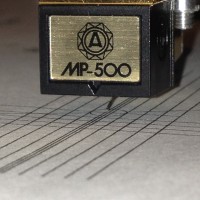
Nagaoka is a relatively small, Japanese firm, whose fortunes (small f) are still being made and lost in the analog world. Their cartridges are high-output, made with moving-permalloy motors – and all models have replaceable stylus assemblies, just like moving-magnet designs. Given the output, you’ll be connecting your tonearm cable to the “MM”, or low-gain, input on your preamp.
Comparing the MP-500 with the model it replaced, the MP-50, there isn’t much to tell them apart. Same specs, same boron cantilever and superfine line-contact stylus. The one notable change is a set-screw system that holds the stylus assembly more firmly in the cartridge body. This is a very nice touch, and addresses a common gripe leveled at MM-type cartridges. It befits a high-end model like the MP-500.
So after at least fifteen hours of playing sides and leaving the room, or just listening in the background, I started to evaluate the Naga more intently. I used several preamps for this review, including my reference Musical Paradise MP-P1 and Lounge Audio LCR MkIII, the Audio Exklusiv P0.2, and Aric Audio’s MM Phono. The Nagaoka was a very happy partner with Jelco’s SA750D tonearm, using the standard counterweight. I experimented a little with tracking forces, and settled on 1.65 grams in my setup. I also played with VTA/SRA, and I’d strongly suggest to users of this cartridge – or any other with a fine-line stylus – do experiment with the angle adjustment, it can really bring out the best in its performance.
My prior experience with Naga’s was limited to the lowly MP-11 (now the MP-110). An enjoyable enough bargain cartridge, that sold for around 100 bucks. I think mine was $20 more and had a boron cantilever. I remember it had pretty impressive bass weight too. It’s been too long to say if there’s a family sound that I can identify between the MP-11 and MP-500. What I did notice with the MP-500 is how fleshed out it became over time: initially sounding a bit “lightweight”, it eventually bloomed into a rich-sounding, authoritative music maker.
It’s hard to recall a time when I was more slowly, but firmly seduced by the charms of a piece that initially seemed to be somewhat plain or unremarkable. It’s not that I ever disliked the MP-500. I thought all along, this is a very competent, balanced performer. It just didn’t “grab me”, until….well, until at some point, it did. A month or more into using it, and I really don’t know exactly when, I started to notice that I was relaxed and smiling while listening to my records with this cartridge. That got my attention, and I started listening more closely, and to a wider selection of musical styles.
As I did so, I found the MP-500 to be a more and more satisfying companion. It never surprised me, or should I say, it never “jolted” me, but consistently delivered a very high level of musical truth. Again, that word honesty comes up. After enough time, I did actually become surprised at how good it was. Is there such a thing as a “slow surprise”? Let me put it this way – I grew more and more fond of the Nagaoka’s presentation, as time went by. To borrow a guy analogy: if an actress like Margot Robbie represents “the hottest” or most exciting woman you could have, and, say, a Reese Witherspoon or Carey Mulligan is a woman you’d really enjoy waking up and talking with every morning, then the Nagaoka MP-500 is definitely a Carey. It’s just more real, natural, and authentic. It’s not makeup and glitz here, but more like the proverbial onion, with many layers of enjoyment to be slowly unraveled.

Not having spent any length of time waking up beside one of these actresses, I’d still like to offer a strong recommendation for the Nagaoka.
In fact, if you’re primarily keen on acoustic music – jazz, folk, classical, etc. – this is a cartridge that I think will have few, if any peers in its price range. It gets the tonal colour of instruments and voices very right, and should give years of listening pleasure. If you need a “hotter” cartridge, for heavily produced music like rock and rap, you’ll likely want to compare it if you can, with a similar offering from Grado, Ortofon and the other usual suspects.
Lastly I want to touch on value. The MP-500 retails for $699 US ($899 in Canada). The replacement stylus is $515 Cdn. ($400 US,). Given that this cartridge comes in at 75% of my reference Charisma Audio MC-1, I have to say I consider it to be a superb value. Still, it’s on the high end of the price scale for a high-output cartridge. And note that the cost of the replacement stylus isn’t trivial either – it’s more than you’ll pay to retip many MC’s with Soundsmith, although it’s considerably less than Ortofon’s high-end 2M Black, for example. On the other hand, street prices should be considerably lower, depending on variables like currency exchange. There is also some disparity of information when it comes to stylus life expectancy: but the best word I have is that 800-1000 hours is likely to be achieved, with proper care and cleaning.
I also want to thank Peter Scharman (PSE Audio Products), the Canadian Nagaoka/Jelco/Neotech distributor, for the review loan. This is an excellent cartridge that I feel is very deserving of our Gold Star Award for performance, and value. Very highly recommended.
Nagaoka MP-500 Moving Permalloy Phono Cartridge, $899.95 Canadian Dollars
Distributed in Canada by PSE Audio Products (Kitchener, ON)
Web: http://www.nagaoka.co.jp/

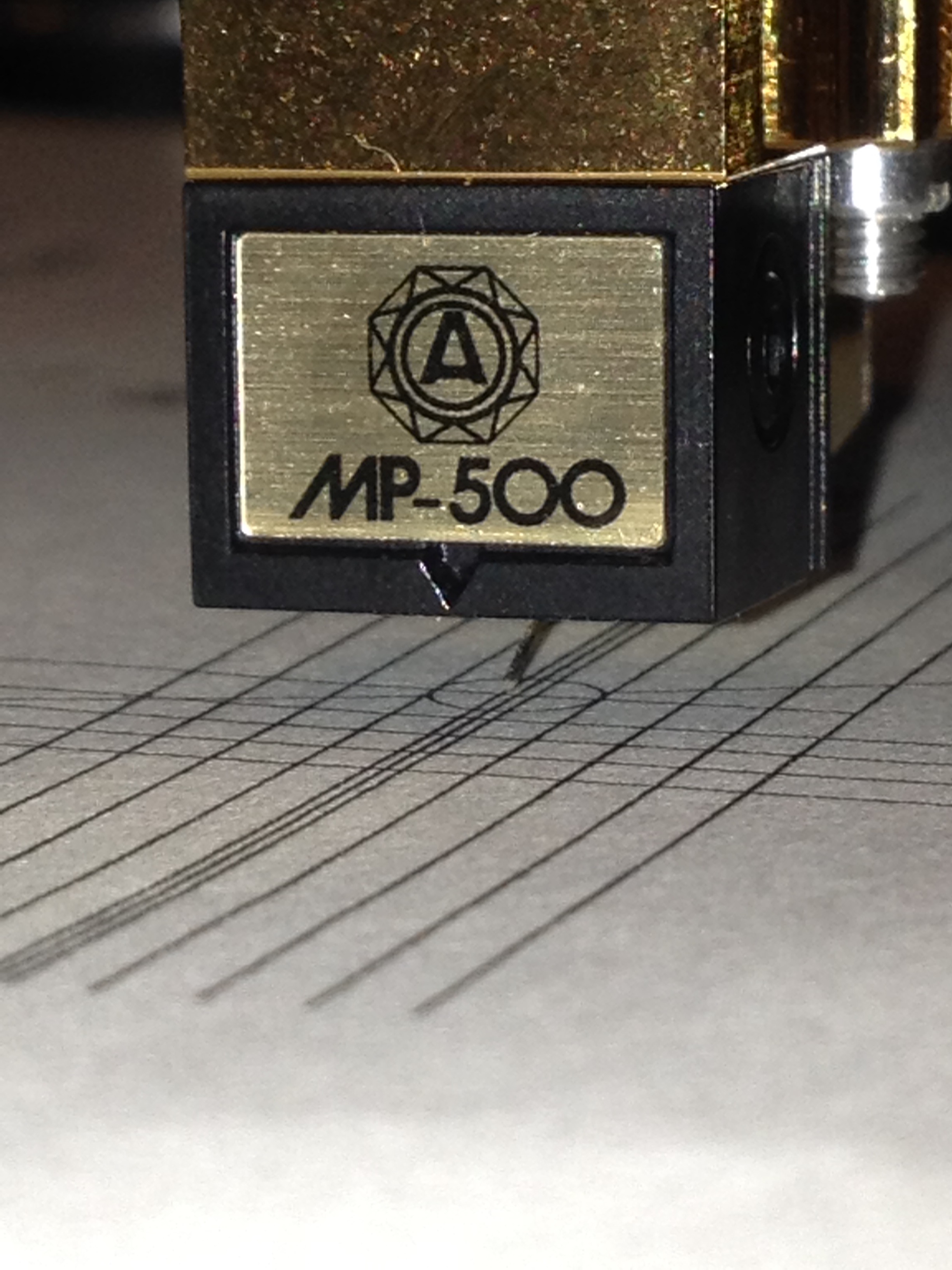
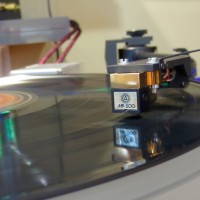
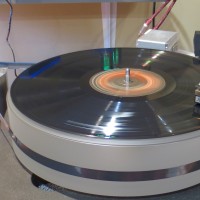
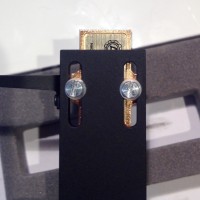
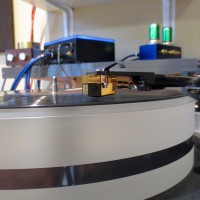
The packaging on my MP-300 states a stylus life of 500 hours, though I’m sure this is not absolute. Still, It’s quite a bit less than similarly priced cartridges which typically last 1,000 hours or more. The MP-300 is a great sounding cartridge though, sharing much of what Noam likes about the MP-500.
I have the even rarer Mp50 super
And the 2m black
Noah, were you using the fluid damping feature of the SA-750D with the MP-500?
David,
It’s hard to remember for sure, that was a while back and I’ve had at least four Jelco arms over the years. But I tended not to use any damping oil. Or very little.
Noam
I have the MP50 as well and find it is a dream cartridge and stylus set up, I had too go really hard on the intall and set up, but crikey’s is worth the effort
I want to get the MP-500, but at the same time, I don’t wanna dish out all that money if the MP-300 is just as good. It’s bad enough that I’m in Canada, so I’m paying twice as much as it is! So what do you guys think? Is the MP-500 drastically better than the 300, or is it about the same??
Hi Ken,
I think it largely depends on how good the rest of your system is. If you have a highly resolving setup, the difference between models will be more obvious, and it’ll be harder for you to live with a lower model. If your setup is more average-to-very-good, you won’t be able to hear everything that the extra $ buys you. As an example, I use an MP-200 as my daily cartridge these days, with various ancillary setups ranging from around $2k up to up over $10k (in my home based retail shop), but typically mounted on a $1300 Gold Note TT; and the Naga never seems embarrassed or stressed. It just does its job and gets out of the way. These are just well made, honest and competent performers. To me the differences between the MP200/300/500 are fairly subtle, and I can happily live with a 200 even having spent a couple of months with/reviewing the 500.
Best regards,
Noam Bronstein
Apologies for chiming in nearly 6 years after the fact, but I recently got my first taste of the Nagaoka sound. I was looking for an affordable upgrade to a very good AT-VM95SH nude shibata for my modified LP120X. The SH was well behaved and did a lot of things well. I was leaning heavily toward the VM540ML or VM760SLC that got raves, when I read some compelling reviews about the warmer sound of Nag carts (yours included). The MP150H got the nod for $310 (USD), in large part due to the price point.
From the first drop, the lush textured midrange and sound stage separation were very apparent. Over the next several hours of playing time, the bass came in quite nicely, while many of it’s other attributes got slightly better with time. The one aspect I couldn’t seem to tame was a slight emphasis on recorded vocal sibilants that I hadn’t noticed with the VM95SH. Even though there was more air and information in the treble detail, the sibilant “S” sounds were the one factor that I didn’t think was better than the SH. I surmised that this was a logical artifact from going from a shibata profile to an elliptical, and I began to wonder of the super fine line contact of the MP500 might have been a more desirable choice for me. After doing more research, I learned that the MP150 and MP200 shared the same body with different cantilevers, and that the MP300 and MP500 shared an improved body with different tip profiles on the same boron cantilever. Knowing that the MP200 nude elliptical tip on a boron cantilever was extremely similar to that of the MP300, and that the MP300 could be upgraded to with the MP500 stylus, I made a logical guess than the MP500 stylus should also play well with the MP150/MP200 body. For an additional $256 I took that risk, and added the JN-P500 stylus to my MP150 body. The results have proven to be strikingly good. It took some time to burn in, but the MP500 stylus retained (and even improved) what I loved about the MP150, and reduced much of the sibilant vocals I was bothered by. After adding a dab of sticky tack under the headshell to compensate for the body weight differences of the MP150 and MP500, along with some more playing time, the MP500 is simply singing on the MP150 body. No more sibilance, and lots of incredible information. It’s how I’ve wanted all my other carts to sound! The clarity and overall glimpse into the recording room is mesmerizing. This was not an inexpensive venture, but my $570 expenditure has been extremely well rewarded, and allowed me to get my feet wet for $310, and add a more manageable $256 increment. So, “yes”, an MP500 stylus can successfully (gleefully) be added to the MP150 body. Highly recommended!
Hi Scott,
Thanks for sharing, this is an excellent report! We haven’t even been able to get the 110 or 150 lately. Hopefully they’ll be available again soon.
I still use the MP-200 daily, lately on a vintage Yamaha GT-750 (made by Micro Seiki), and it still amazes me. By the way, I don’t know where you got a JN-P500 for $250, but that’s a screaming bargain. Well done.
Thanks for your interest in Wall of Sound.
Noam
i bought the nagaoka mp500h cart. the specs dont give the height of the cart.I need this to set up the height of my technics gr2 turntable. Can you help?
Hi Rodney,
The height should be 18.5mm, you can check yours to be sure. However, the formula Technics uses is probably with their headshell. “Universal” mount headshells and cartridges, they’re all different. So I would stick with the tried and true methods. Start with the arm being level (parallel) to the LP when the needle is in the groove. From there you can tweak by listening, or you could go as obsessive as trying to get the stylus rake angle to 92.5°, with a USB microscope. Bear in mind that if you adjust arm height for the thickness of each LP, you’re unlikely to hear changes unless you have a $50k front end, and bat’s ears.
So, have fun –
Noam